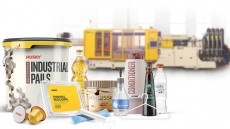Walnut leaf extract could be natural antioxidant alternative
presented a potent ability to scavenge damaging reactive oxygen and
nitrogen species responsible for food spoilage, new research has
reported.
"The results of the present study showed that the J. regia leaf can be used as an easily accessible source of natural antioxidants," wrote lead author Isabel Almeida from the Faculty of Pharmacy at the University of Porto. "The studied extract might be helpful in the prevention of lipid peroxidation and the protection of food, excipient bases and medicines from oxidative damage," she added. Adding a note of caution however, the researchers stated that before the extracts can be added to an ever growing list of alternatives to synthetic preservatives such as like butylhydroxyanisole (BHA) and butylhydroxytoluene (BHT) to slow down the oxidative deterioration of food, toxicity studies should be performed to ensure safety. Suspicion over chemical-derived synthetic preservatives has pushed food makers to source natural preservatives such as rosemary extract instead, and market analysts Global Information pitch the global food preservative market at €422.7bn ($575bn), reaching €522bn ($710bn) by 2008. Writing in the peer-reviewed journal Food Chemistry, Almeida and co-workers report that the ethanol/water extract from J. regia leaves was active at scavenging reactive species at concentrations in the microgram range. Indeed, the IC50 value, a measure of the concentration at which 50 per cent of the free radicals are scavenged, for scavenging reactive oxygen species (ROS) was 47.6 micrograms per millilitre, which compared favourably with the Trolox value of 452 micrograms per millilitre. The IC50 for scavenging reactive nitrogen species (RNS) was 1.80 micrograms per millilitre. The researchers measured the oxygen radical absorbance capacity (ORAC) for ROO as 2.17 micromoles Trolox equivalents/mg extract, which was 55 per cent of the Trolox value, and almost double the ORAC value quoted for vitamin C (ascorbic acid, 1.24 micromoles Trolox equivalents/mg extract) Quantification of the total phenolic content of the extract gave a value of 270 mg of gallic acid equivalents (GAE) per gram of extract. "These results showed that J. regia leaf extracts can be used as an easily accessible source of natural antioxidants," concluded the researchers. Antioxidant revenues are predicted to grow from 46m ($55m) in 2004 to 58m ($70m) in 2008, according to Frost and Sullivan. Source: Food Chemistry (Elsevier) Volume 106, Issue 3, Pages 1014-1020 "Walnut (Juglans regia) leaf extracts are strong scavengers of pro-oxidant reactive species" Authors: I.F. Almeida, E. Fernandes, J.L.F.C. Lima, P.C. Costa and M.F. Bahia













